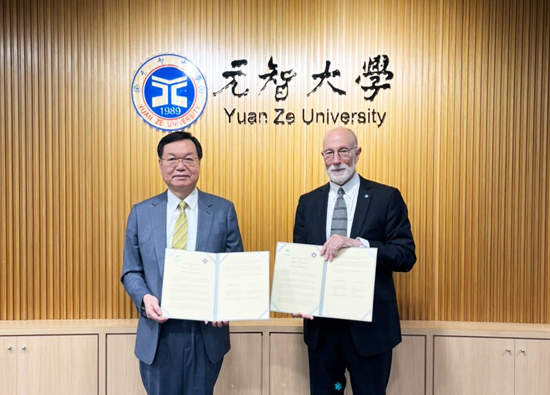05.2023 Group Briefing
U-Ming Marine Transport welcomes the inclusion of 'Yuyi Wheel'
U-Ming Marine Transport / Huang Yizhen


.jpg) U-Ming Marine Transport (Singapore) Private Limited, a subsidiary of U-Ming Marine Transport, commissioned the construction of the fourth 190000 deadweight ton liquefied natural gas (LNG) dual fuel NOx Tier III Cape size bulk cargo ship, "M.V." Ubuntu Loyalty ", at Shanghai Waigaoqiao Shipyard on March 22, 2023, Invite the wife of Mr. Rod Elliott Chairman from Anglo American Shipping Pte. Ltd., a multinational miner Susan Elliott named the new ship. The ceremony was successfully completed under the witness of Douglas Hsu and many guests.
U-Ming Marine Transport (Singapore) Private Limited, a subsidiary of U-Ming Marine Transport, commissioned the construction of the fourth 190000 deadweight ton liquefied natural gas (LNG) dual fuel NOx Tier III Cape size bulk cargo ship, "M.V." Ubuntu Loyalty ", at Shanghai Waigaoqiao Shipyard on March 22, 2023, Invite the wife of Mr. Rod Elliott Chairman from Anglo American Shipping Pte. Ltd., a multinational miner Susan Elliott named the new ship. The ceremony was successfully completed under the witness of Douglas Hsu and many guests.The Yuyi Ship, with a captain of 299.88 meters and a width of 47.5 meters, is a new force in the U-Ming Marine Transport fleet's carbon reduction program. It uses LNG as fuel power and is equipped with an advanced MAN Energy Solutions' high pressure ME-GI engine, which can reduce carbon emissions by over 25%, effectively reduce methane emissions (Methane slip) and ecological footprint (EF) issues (Note 1), Simultaneously enhancing the overall fleet operational competitiveness.
The 10-year long-term transportation contract signed between U-Ming Marine Transport and Anglo American Resources Group for four LNG dual fuel powered bulk carriers is the first in the bulk industry, symbolizing the commitment of the two companies to promote carbon reduction and adhere to sustainable operation, and specifically implementing the sustainable vision. It also makes U-Ming Marine Transport one of the earliest bulk shipping companies in the world to use LNG fuel power.
--
Note 1: "Ecological footprint" is an analytical method for measuring human demand for environmental resources. It was proposed by Canadian scholars Rees and Wackernagel in 1904 to calculate the land or water area required for population consumption or waste disposal in a certain area. The ecological footprint can be converted, and the size of the footprint represents the pressure exerted by humans on the environment. Source: National Taiwan University "Science Online - High View Natural Science Teaching Resource Platform".
#




















